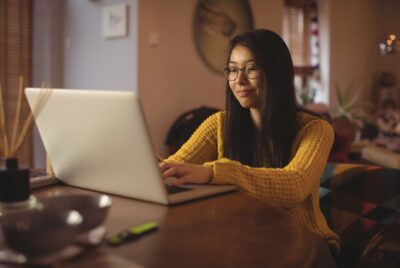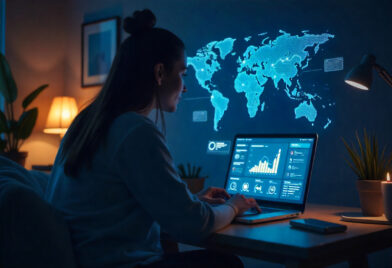When the COVID-19 pandemic forced the world into isolation, education faced its biggest transformation in decades. For design students and professionals, that shift was both a challenge and an opportunity. Suddenly, creativity went virtual—classrooms became Zoom calls, portfolios went digital, and collaboration moved to the cloud.
Today, even as the world reopens, remote design education remains a powerful model reshaping how designers learn, teach, and connect globally.
The Shift to Virtual Learning
Before 2020, online design education existed—but it wasn’t mainstream. Most students believed that creative disciplines required in-person guidance. The pandemic challenged that idea. Platforms like Figma, Miro, and Adobe Creative Cloud made real-time collaboration possible from anywhere.
Design educators quickly adapted—recording lectures, creating virtual critique sessions, and encouraging students to share progress online. Remote education wasn’t a temporary fix; it became an innovation hub.
According to Coursera’s Global Skills Report, enrollment in creative design courses grew by over 250% between 2020 and 2023. The demand for flexible, skill-based learning is only increasing.
New Learning Models for Designers
Remote learning democratized access to design education. Students from small towns or developing countries could now learn from industry experts abroad. Key models that emerged include:
- Asynchronous Courses: Students learn at their own pace with recorded tutorials and project submissions.
- Mentorship-Based Programs: Platforms like ADPList and DesignLab pair learners with experienced designers for one-on-one guidance.
- Community-Driven Learning: Slack and Discord groups act as digital classrooms where designers share feedback, tips, and resources.
This flexible structure fits today’s global workforce and supports lifelong learning for freelancers and professionals alike.
The Advantages of Remote Design Education
- Accessibility: Quality education is no longer limited by geography or cost.
- Collaboration Tools: Cloud software enables seamless teamwork across time zones.
- Career-Ready Skills: Students learn the same tools used in professional design studios.
- Portfolio Development: Every online project becomes a showcase piece for future employers.
Remote learners often develop strong self-discipline and digital communication skills—qualities highly valued by employers.
The Challenges That Remain
Of course, remote education isn’t without its struggles:
- Lack of physical studios: Hands-on activities like model-making or screen-printing can be hard to replicate online.
- Digital fatigue: Constant screen exposure can lead to burnout.
- Limited peer interaction: Informal learning—like brainstorming in hallways—is harder to recreate virtually.
However, institutions are finding creative ways to overcome these issues. Hybrid models that combine virtual theory with short, in-person workshops are becoming the new standard.
Innovation in Digital Learning Tools
The pandemic accelerated innovation in design-focused EdTech. Now we see:
- AI-powered feedback tools that evaluate typography, color harmony, and composition.
- Virtual reality (VR) classrooms where students interact with 3D models in immersive environments.
- Interactive whiteboards like Figma FigJam and Miro for collaborative ideation.
These technologies make online learning not only possible but exciting.
Industry Collaboration & Certification
Partnerships between design schools and industry leaders are becoming more common. For instance, Adobe and Google offer free certification programs recognized by employers worldwide.
This bridge between education and employment ensures that students learn what companies actually need—UI/UX principles, motion design, web prototyping, and more. Employers increasingly value portfolios over degrees, which benefits remote learners who build tangible, project-based skills.
What the Future Holds
As we move toward 2026 and beyond, remote design education will evolve in several key ways:
- Hybrid classrooms blending online theory and physical workshops.
- AI-driven learning paths tailored to each student’s creative style.
- Global mentorship ecosystems connecting beginners with professionals worldwide.
- More interdisciplinary learning, merging design with business, marketing, and technology.
This evolution ensures that design education remains relevant, dynamic, and accessible to all.
The Rise of the Global Design Community
Remote learning erased borders in the design world. A student in India can now collaborate on a UX project with peers from Spain or Brazil. This cultural exchange expands creativity—designers learn to think globally while solving local problems.
Online communities like Behance, Dribbble, and LinkedIn Design groups have become the new classrooms for peer review and inspiration.
Beyond the Pandemic: Lasting Lessons
The biggest lesson? Creativity doesn’t need a physical room—it needs curiosity, access, and collaboration. Remote education has shown that great designers can emerge from anywhere if given the right tools and mentorship.
Platforms like Coursera and Skillshare continue to push the boundaries of what’s possible, offering high-quality courses to anyone with a laptop and ambition.
Conclusion: The Future Is Hybrid and Human-Centered
Remote design education is no longer an experiment—it’s the foundation of the future. It empowers individuals to learn at their own pace, collaborate globally, and build meaningful careers without traditional boundaries. The next generation of designers will be defined not by where they studied, but by what they created—and how they used technology to bring imagination to life.





